#traditional chinese painting
Text

張石溪
7 notes
·
View notes
Text
Practice Chinese painting

2 notes
·
View notes
Text
Explaining one of VTMB paintings (pt 13)
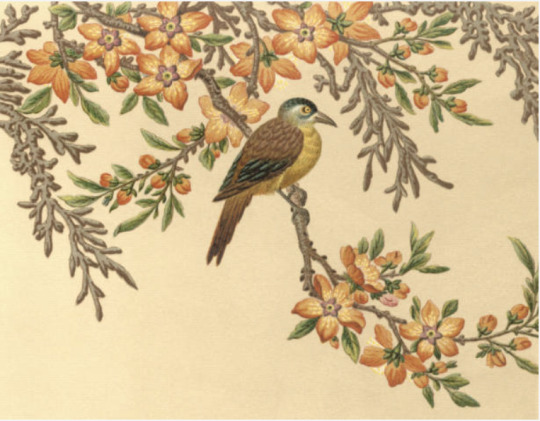
This painting show up as one of the works of art found in The Red Dragon Chinese restaurant in Chinatown run by the honorable and successful local businessman Wong Ho in VTMB.
It is actually a single panel of a much larger colored lithography on traditional Chinese art from a French book called L'Ornement Polychrome (in English: Color Ornament) which is a major pictorial works on the history of design published in 1880 - 1889 by Albert-Charles-Auguste Racinet.
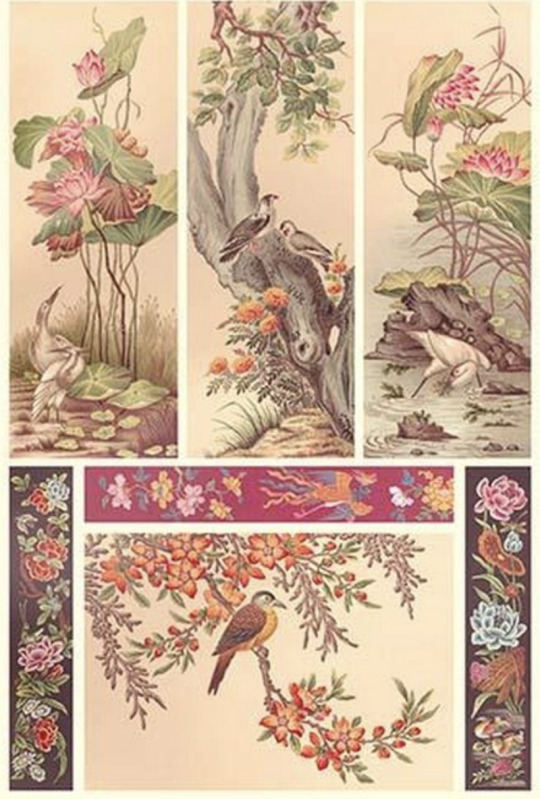
Chinese Bird Panels colored lithography found in L'Ornement polychrome by Albert-Charles-Auguste Racinet (1880 - 1889).
Also the Black panel's to the left and right of this bird are also used with a different print from another page of this book as a part of a trio of paintings.

trio of art [left is with mod/right is without], screen shot from the Nexuse Mods page for the VTMB Art Texture Pack mod made by Vampire Nonsense whose citation list of the paintings I’ve found very helpful with identifying art/artist when I can’t do it on my own. It also seems like a nice mod as it doesn’t change the paintings to be different from the ones used in the base game but rather updates them to have better resolution. [6]
The middle piece of this trio comes from another page on Chinese art from L'Ornement polychrome (shown below) with this page possibly showing print recreations of embroidery patterns rather then paintings, but i’m not sure.

Chinese Bird Panels (embroidery patterns?) colored lithography found in L'Ornement polychrome by Albert-Charles-Auguste Racinet (book author) (1880 - 1889). I assume that the Chinese and stamps are the works titles and the artist signatures respectively for the panels in the print rather then being reproductions made by Albert-Charles-Auguste Racinet himself like on the other page.
Albert-Charles-Auguste Racinet (1825–1893) is best known today for publishing two major pictorial works on the history of design: Le costume historique (English: Historical costume ) and the formerly mentioned book L'Ornement Polychrome which was published in ten installments between 1869 and 1873, that acts as a visual record in 100 plates of the decorative arts from antiquity to the eighteenth century. The work was such a huge success that in 1885–7. Racinet brought out a second series, this time of 120 plates, and updated to include designs of the nineteenth century as well. The imagery presented in both series is drawn from a wide array of various mediums, including woodwork, metalwork, architecture, textiles, painting, and pottery, and from cultures all over the world. [1,2]
Being the son of a printer lithographer and later a student at l’École de dessin de la Ville de Paris, triggered Racinet aspiration to inspire and teach others. His ability to reproduce classical and ancient art – studying and learning from them at art school and the knowledge of reproduction and print that his father thought him sparked his interest in art education – producing scholar books. As an artist he did produce some individual works and his paintings were even exhibited at the Salons in Paris for 1849 to 1874, but in fact these were always reproductions of ancient manuscripts from la Bibliothèque Nationale, showing classical and archeological subjects. [3]
His career as an artist, art historian but mainly as director of publications echoes the development of decorative art in the second half of the 19th century. The spirit of discovery, progress and invention permeated all aspects of life during the 19th century. With the construction of the Suez Canal in the 1860’s, travel was facilitated between Europe and Asia, opening up hitherto inaccessible worlds to the western world. That same decade saw major archeological excavations taking place in Egypt and in Italy at Herculaneum and Pompei, revealing long forgotten artefacts to the European public. These activities triggered a renewed interest in the classicism. But note that, the revival of ancient styles was not a matter of copying and imitating, it was rather more a start of a new chapter in decorative art – to be inspired and to borrow ornaments of past civilisations to combine with new found industrial techniques to create a new type of decorative design. As part of select group of teachers, publicists and artists, Auguste ‘diffuse the most significant motifs of the decorative arts of the time. [3]
So I will fully admit that most of my knowledge of art history centers around European, North America and a bit of African art history. Traditional Chinese art history is something I’m less familiar with and as I have zero ability to read ether French or Chinese and can’t find an English translation of L'Ornement Polychrome online I’m mostly just guessing on this print being Racinet’s example of the traditional Chinese painting genre known as Huaniaohua (Traditional Chinese: 花鳥畫 // English: Bird-and-Flower paintings). I will be basing a majority of my description about the Bird-and-flower painting genre from the description I found in the chapter on Bird-and-flower paintings from the book Essential Terms of Chinese Painting by Dr. Maria Cheng and Dr. Wai Hung Tang[4]. If anyone has more knowledge on this subject free to comment below.
Bird-and-flower paintings are one of the three traditional Chinese painting genres, the other two being landscape and figures, that predate the Han dynasty (200 BCE) and continued to evolve long after. While it is called “Bird-and-flower paintings” the genre also extends to any aquatic, terrestrial or arial creature other then humans. There are five subgenre that works in this genre are broken up into: feather, flower, insect, aquatic and beast paintings. The separation of Birds and Flowers as a genre distinct from figure and land scapes was the result of a rivalry between two famous artist/art-masters that lived on opposite sides of the country and each forming their own schools of Bird-and-flower paintings.
The first being Huang Quan (Traditional Chines: 黃筌) (903–965) who lived in the western interior and was known for a meticulous style of depiction as show below in his work Xie Sheng Zhen Qiu Tu, (10th century).

Bird-and-Flower paintings done in the meticulous style as implied by the name use very fine brush strokes and seek to represent life like colors and require close observation. Outlines will be done in stark ink and vibrant washes will then be added at later stages.
The second was Xu Xi (Chinese: 徐熙) (886-975) who lived in the east cost and favored more expressive style of Birds and flowers as seen in his work shown below Butterfly and Chinese Wisteria Flowers (active mid-10th century)

Bird-and-Flower paintings done in the expressive style places a much greater emphasis on expressing spirit of the subject being captured over a ridgiousoly conforming to lifelike depictions. And while Xu Xi art may not seem any less of a lifelike depictions then Huang Quan at first glance, it is important to keep in mind that he was one of the first to use this expressive style. This was also not the only style that focused on the idea of capturing the feeling rather then depicting reality in not only Chinese but other Asian art styles, and later these themes would influence 19th century westerns artists such as the Impressionists who found inspiration in a wide verity of Asian painting and printing styles. Western artist in the 19th century suddenly became exposed to centuries of artistic traditions, styles and histories from Asia, the Middle East and Africa through the publication of books such as L'Ornement Polychrome which for the first time allowed them to draw from new sources of artistic inspiration outside of the centuries of European art styles and traditions.
Finally, while these two masters from long past where the major influences at the beginning of the Bird-and-Flower paintings genre it is by no means considered an outdated or dead art style with modern artists such as Fan Yang’s work The Bee, Butterfly and Grasshopper, ink and color on paper, (2010) shown below being exhibited as a part of the Tasteful Leisure among Flowers – Contemporary Chinese Bird-and-Flower Painting Exhibition jointly hosted by Beijing Fine Art Academy, Guangdong Artists Association, Guangzhou Academy of Fine Arts, Contemporary Lingnan Art Research Center and Guangdong Provincial Society of Chinese Painting in 2018.

The Bee, Butterfly and Grasshopper, ink and color on paper, (2010) by Fan Yang
Citations
[1]The Miriam and Ira D. Wallach Division of Art, Prints and Photographs: Art & Architecture Collection, The New York Public Library. "L'ornement polychrome" The New York Public Library Digital Collections. 1880 - 1889. https://digitalcollections.nypl.org/items/510d47da-3fac-a3d9-e040-e00a18064a99
[2] “Albert Racinet's L'Ornement Polychrome (1869–73).” The Public Domain Review, The Public Domain Review , https://publicdomainreview.org/collection/albert-racinet-s-l-ornement-polychrome-1869-73.
[3]Sanders, Esmée Elice. “Auguste and Esmée – an Introduction.” L'Ornement Polychrome, 19 Feb. 2015, https://racinet.wordpress.com/2015/02/19/.
[4]Cheng, Dr. Maria, and Dr. Wai Hung Tang. “Bird-and-Flower Painting.” Essential Terms of Chinese Painting. United States: City University of Hong Kong Press, 2018. Print
[5]Wang, Sue. “Tasteful Leisure among Flowers – Contemporary Chinese Bird-and-Flower Painting Exhibition.” Central Academy of Fine Arts New PPER, 5 Oct. 2018.
[6] link to Vampire Nonsense’s VTMB Art Texture Pack mod on Nexus Mod
https://www.nexusmods.com/vampirebloodlines/mods/75?tab=description
#VTMB#Explaining one of VTMB paintings#bird and flower painting#huaniaohua#vampire the masquerade#traditional chinese painting#l'ornement polychrome#albert charles auguste racine#xu xi#The red dragon(VTMB)#huang quan#vampire nonsense#art history
3 notes
·
View notes
Photo







[Hanfu・漢服] Ink wash painting of Tang Dynasty Ladies Art By Artist @蘇無竹
————————
🎨Artist @蘇無竹
🔗Weibo:https://weibo.com/6628041886/N3tRrdL7c
————————
#chinese hanfu#Tang Dynasty#Ink wash painting#hanfu#hanfu accessories#hanfu art#chinese#chinese traditional clothing#chinese style#art#蘇無竹#art sharing
337 notes
·
View notes
Text

158 notes
·
View notes
Text

Shang Qinghua's new fit ❄
#shang qinghua#sqh#svsss#scum villians self saving system#mxtx#danmei#art#inspired by traditional chinese landscape paintings
974 notes
·
View notes
Photo

Never thought I'd say this, but I finally painted with my one fear -- green. As much as I hate and avoid painting with the colour, I think it actually turned out pretty cool I think! It’s a scene from from one of my favourite films, ‘House of Flying Daggers’ because green features so heavily in the film and it’s one of the first things that came to mind. It was going to be either this, or a portrait of Shrek #brbchasingdreams
prints | tutorials
#brbchasingdreams#art#painting#drawing#fan art#movie#house of flying daggers#wuxia#zhang ziyi#zhang yimou#chinese films#my art#traditional art#watercolor#design#artist#artists on tumblr#movie scene#portrait
2K notes
·
View notes
Text
I loved how these turned out!!
I painted the phoenix with gouache.
The swan is with chinese ink.


If you look at my Tumblr, you'll see many traditional art also! I made them while taking an illustration art course at college :)
And I wanted to share them with you peeps here, so here they are! Hope you like them ;)
#my art#artists on tumblr#illustration#traditional art#illustrator#art#artwork#original art#gouache painting#gouache#chinese ink#mirartkiki#traditional painting#phoenix drawing#phoenix#swan
29 notes
·
View notes
Text

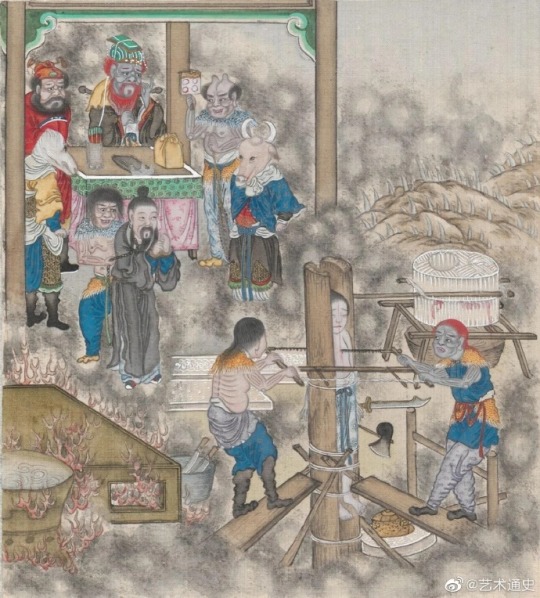




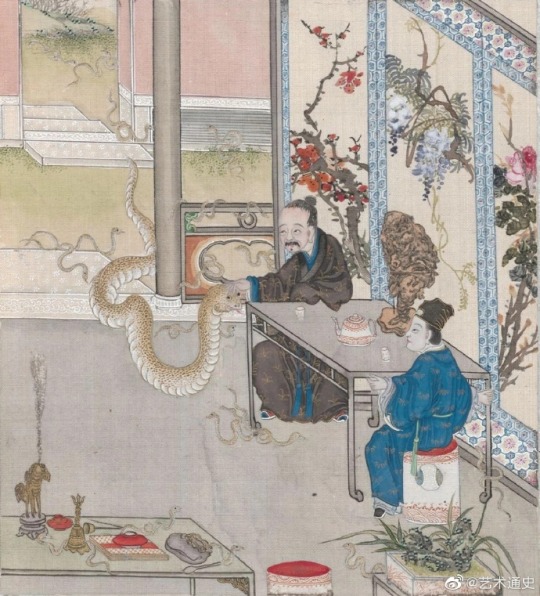
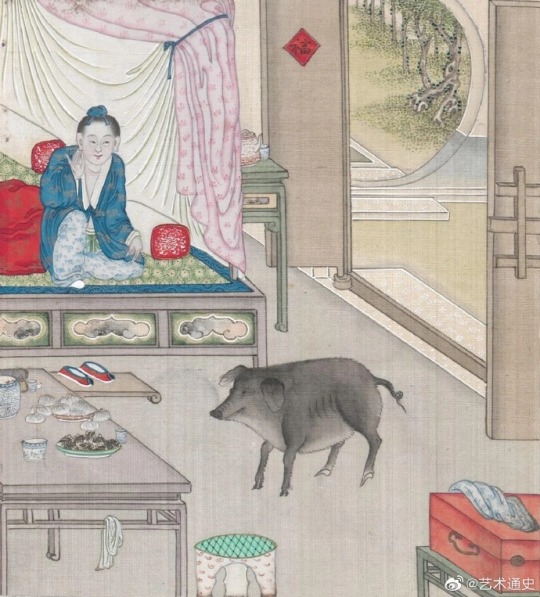
Qing Dynasty Comic Book: Illustration Set for Pu Songling Strange Tales
Qing dynasty comic: a set of illustrations for Strange Tales from the Liaozhai Studio (聊齋志異) by Pu Songling (蒲松龄). It is a collection of short stories about the supernatural, a genre popular in China for several centuries, featuring wizards, foxes and ghosts.
Archived in Austrian National Library.
Photo: ©艺术通史
#ancient china#chinese culture#chinese art#qing dynasty#chinese mythology#chinese painting#chinese calligraphy#ink painting#traditional painting#watercolor#inkart#chinese literature#Chinese fairy tales#fairy tales#supernatural#foxes#fox#ghost#chinese miniatures#miniature#miniature art#miniature painting#weird#weird dreams#weird art
50 notes
·
View notes
Text
Imagine being rich and paying for bland minimalist textiles and cold sterilized homes when you could be paying folk artists handsomely for handcrafted beauty and color —helping preserve honestly quite priceless artistic traditions and supporting the people who keep these legacies alive— instead.
#you have all the ability to buy pieces of art with vibrant histories and made with the worlds most skilled hands#to own something gorgeous and genuine and guarantee that these art forms survive and the people who provide them are well-cared for#and you’d rather live in a hospital and wear three colors all your life#Persian rugs?#traditional Bengali Jamdani fabrics? old school banarasi’s made by hand?#Guatemalan upholstery?#Romanian embroidered blouses?#Japanese-sourced furniture made with ancient joinery techniques?#Chinese porcelain made the old-fashioned way?#gold finery from east Africa?#Czech glass vases?#Navajo blankets?#Vietnamese embroidered thread ‘paintings’?#COME OOOOONNN#rich people learn how to spend your money or give it to me
184 notes
·
View notes
Text
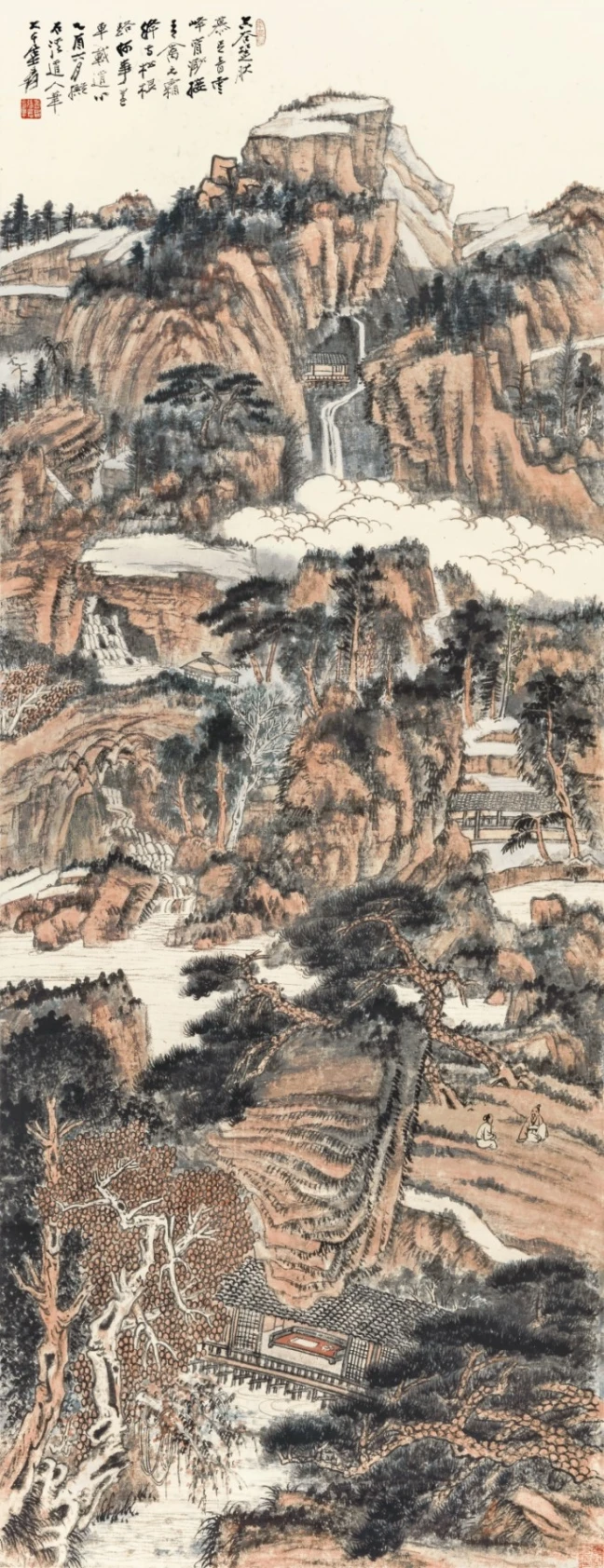
Zhang Daqian, 1945, Empty valley and cloudy peak, ink and colour on paper, on scroll, 161 x 63 cm
#Zhang Daqian#rice paper#xuan paper#china culture#chinese artist#traditional chinese painting#chinese ink#art#china
5 notes
·
View notes
Text

"water rabbit"
Happy Chinese new year!
It's going to be the year of the rabbit. This painting will be part of wowxwow's exhibition "renewal" and will be available for purchase there.
#sylvia strijk#illustration#artists on tumblr#my art#fantasy art#fantasy#traditional painting#mixedmedia#year of the rabbit#chinese zodiac#chinese new year#fantasy portrait#original character#Character art#watercolour
255 notes
·
View notes
Text
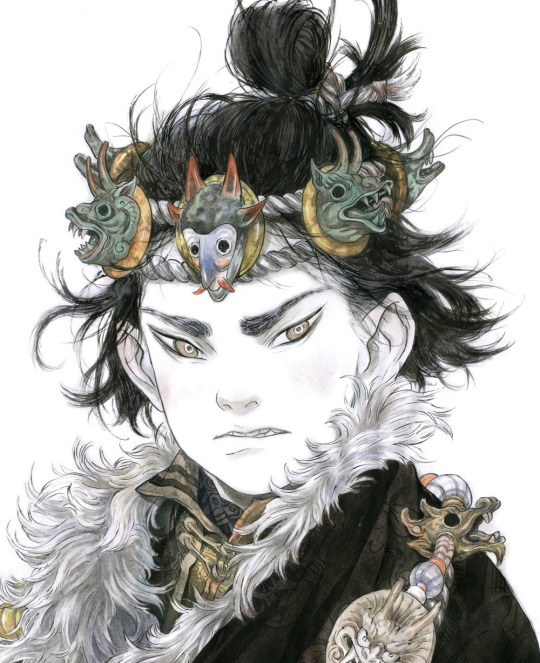
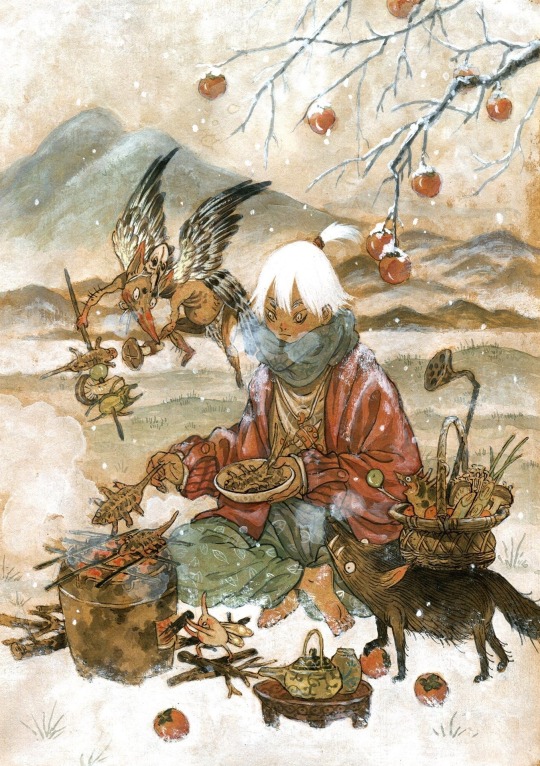
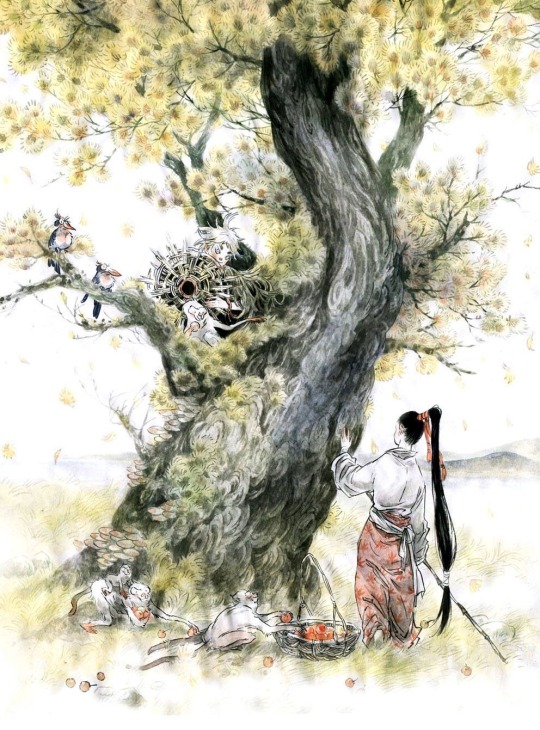

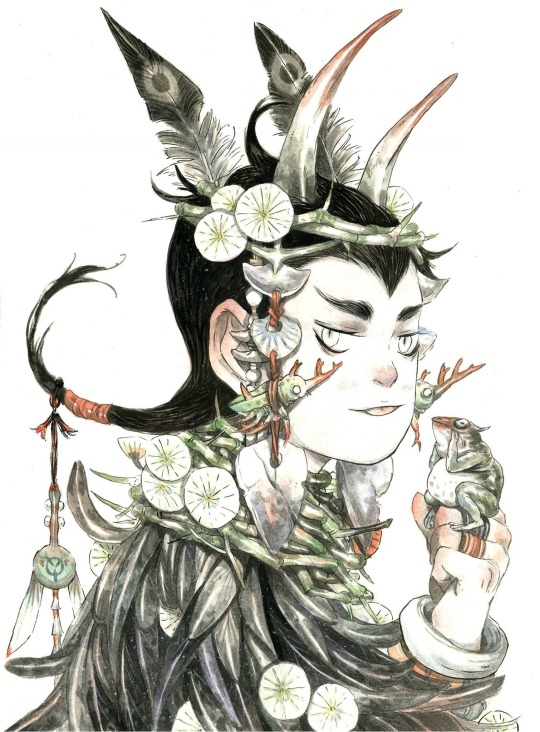

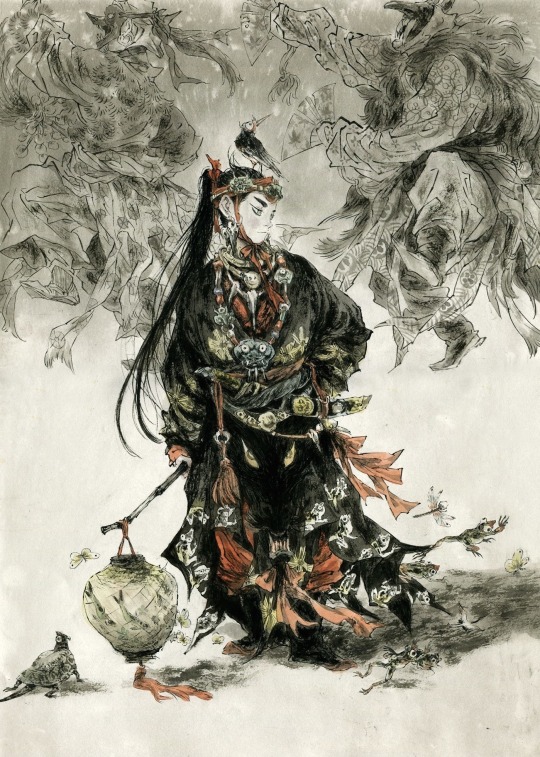
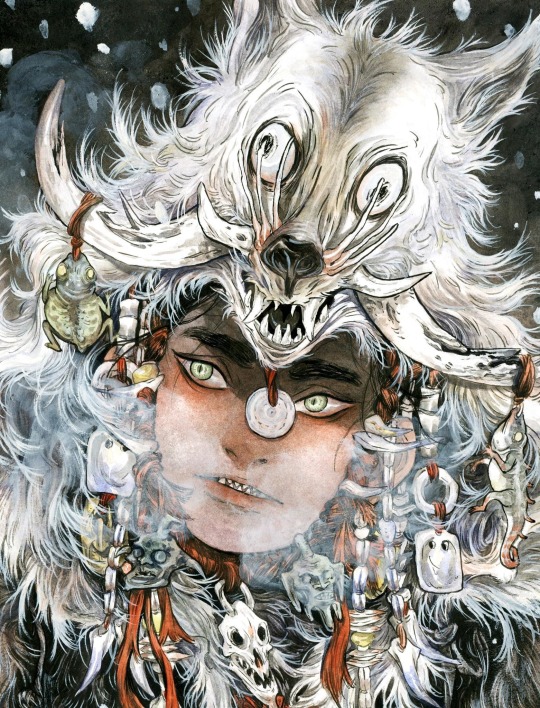
Artist Showcase: Zao Dao
#zao dao#Cuisine Chinoise: Five Tales of Food and Life#song of sylvan#artwork#illustration#comics#chinese comics#traditional chinese art#paintings#monkey prince#journey to the west#artist showcase
85 notes
·
View notes
Photo



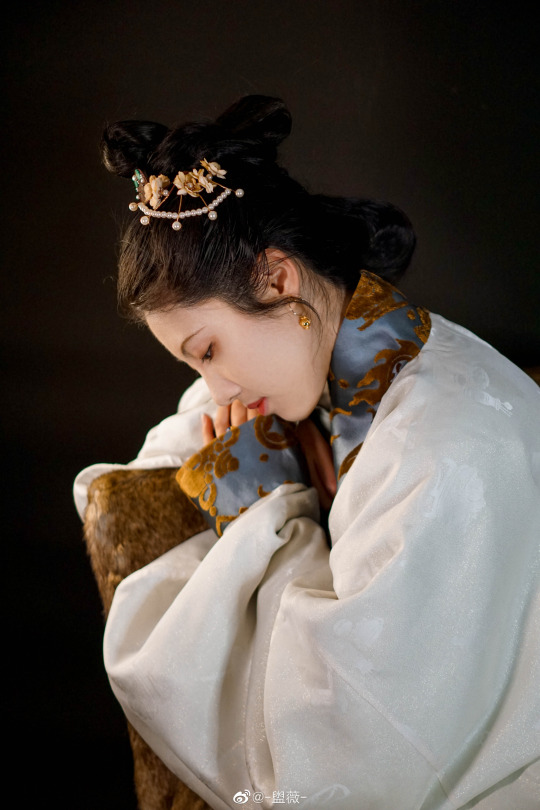

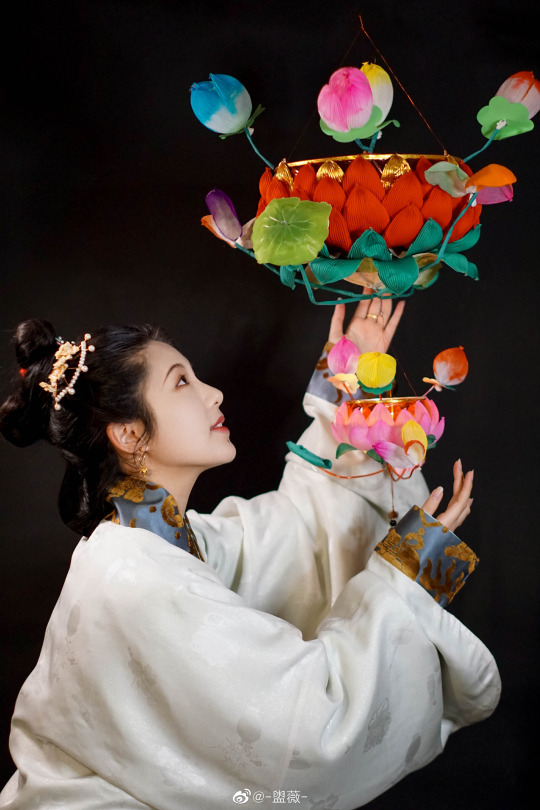
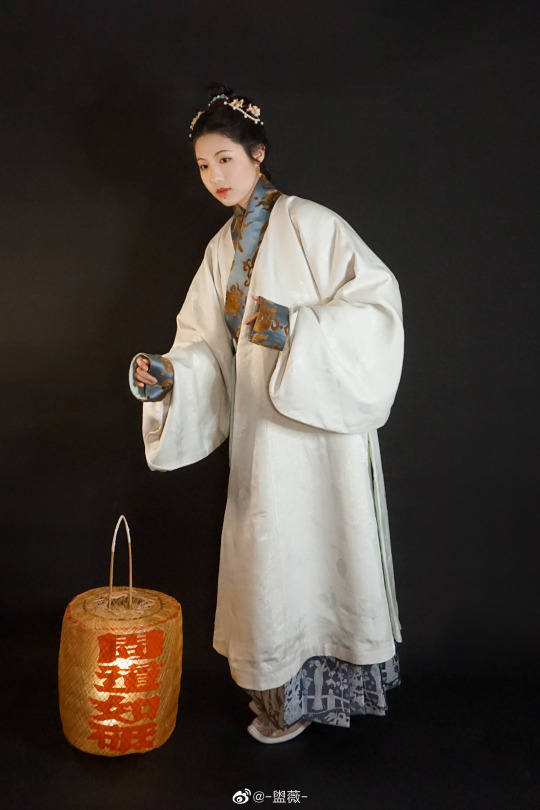

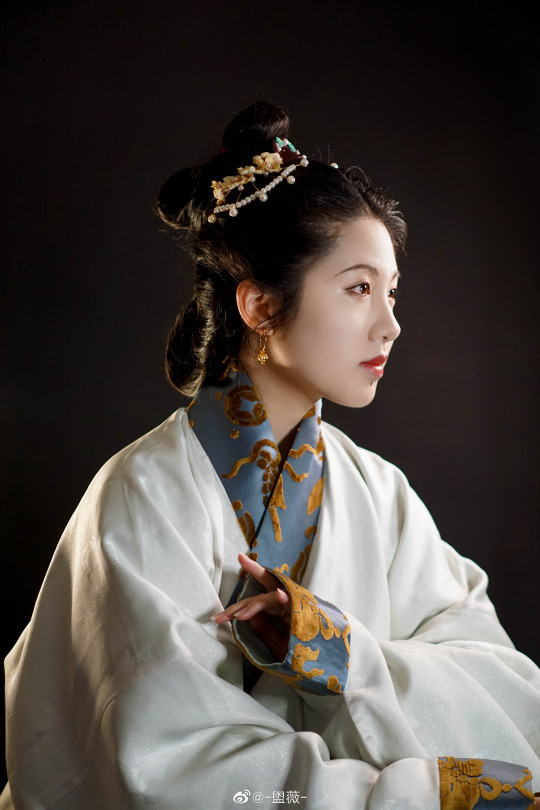
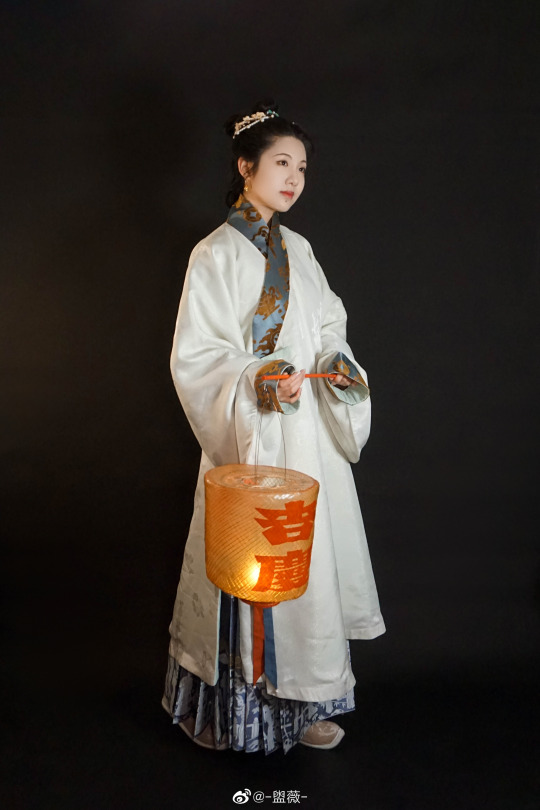
[Hanfu · 汉服]Chinese Ming Dynasty Wanli period (1573–1620 AD) Traditional Clothing Hanfu & Hairstyle Based On Ming Wanli period woodblock print painting
_______
Recreation Work:@-盥薇-
👗 Hanfu,Purse:@YUNJIN云今
🔗微博:https://weibo.com/3942003133/MrAxG2Q0q
_______
【About the Hairstyle 鬃髻(Zōng jì)】
The 鬃髻(Zōng jì) is one of the traditional Han ethnic woman hairstyles. It lasted from the Ming Dynasty to the end of the Qing Dynasty, and it still exists among Hakka(客家) elderly women.
We can see this hairstyle in the painting "《李端端图》" by Tang Yin(唐寅), a painter of the Ming Dynasty.Collection of Nanjing Museum
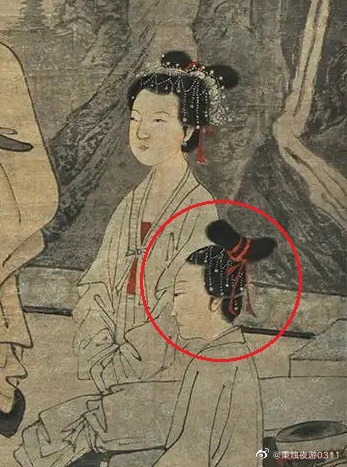
The 鬃髻(Zōng jì) can be matched with other hairstyles,like below:
Peony Head (牡丹头)+鬃髻(Zōng jì),
Ming Dynasty Green-glazed female pottery figurines,Collection of Guangdong Museum
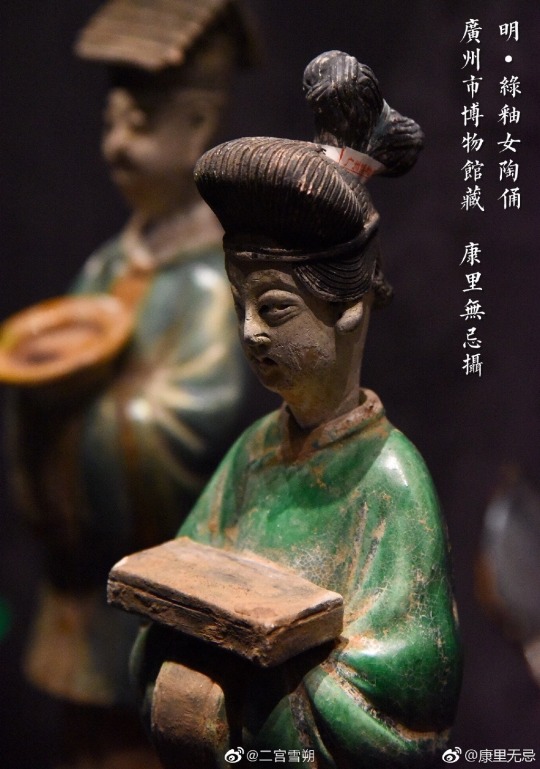
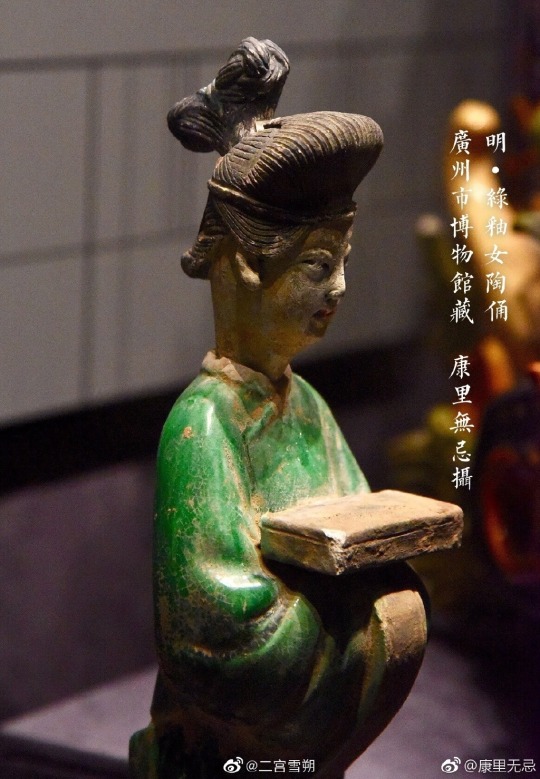
Ming Dynasty Colored Sculpture of Jellyfish Building in Jinci Temple/晋祠水母楼明代彩塑
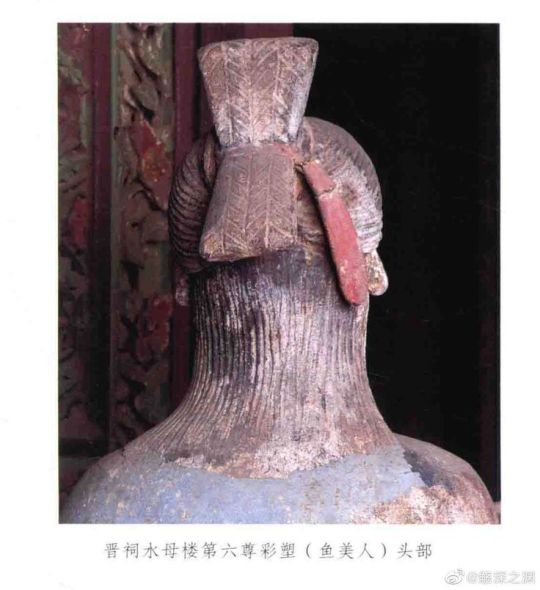
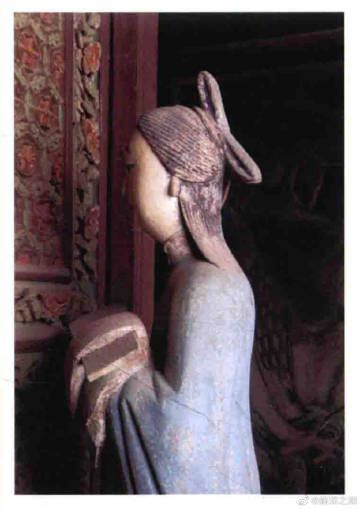
Qing Dynasty 鬃髻(Zōng jì),Qing Dynasty figurines
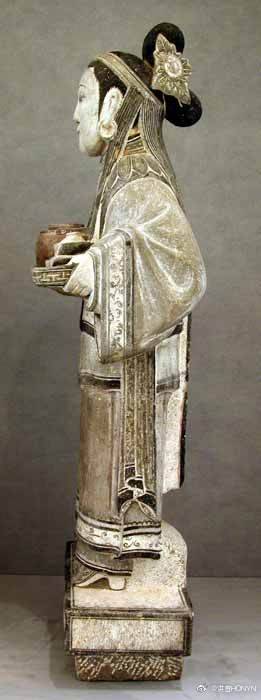
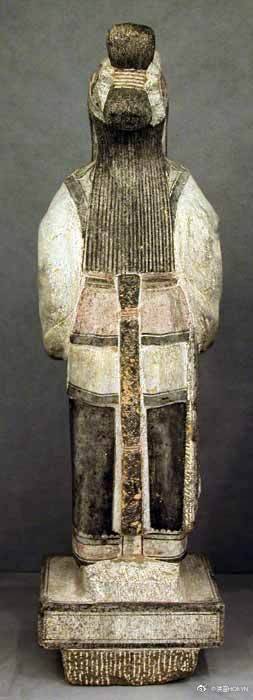
The Hakka(客家) ’s 鬃髻(Zōng jì) is divided into: 三把头(Sān bǎtóu) and 两把头 Liǎng bǎtóu)
For the most typical 三把头(Sān bǎtóu) , it divides the hair into three layers: upper, middle and lower. The part of the hair from the front of the forehead to the top of the head is called "门股(Mén gǔ)", and 门股 is divided into three parts: left, middle and right.Generally, some wigs are placed on the hair or combed the hair in reverse way to make it look fluffy.So from the front, it will have a very “full” effect of hair.
The 三把头(Sān bǎtóu) with 鬃髻(Zōng jì) of Hakka women in old photos
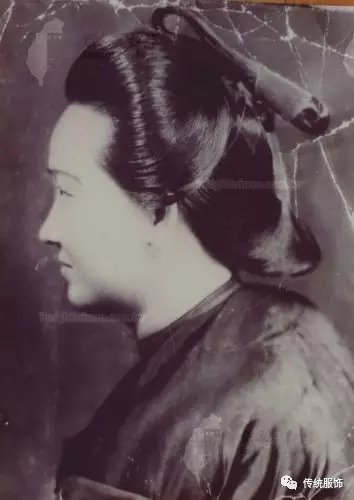

The part below the 三把头 (Sān bǎtóu) is generally called "髻尾". The upper, middle and lower parts of the hair will eventually tied together.
↓Schematic diagram in the book "Discussion on Liudui Hakka Traditional Clothing《六堆客家传统衣饰的探讨》"
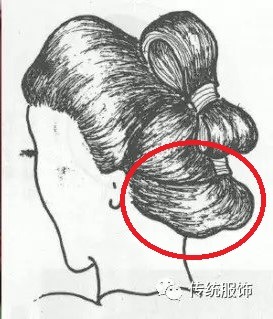
Hakka(客家) ’s 鬃髻(Zōng jì) :两把头 (Liǎng bǎtóu)
The :两把头 Liǎng bǎtóu) is the 三把头 (Sān bǎtóu) that simplifies the part of the "髻尾(The lower part)" , and divides the hair into two part,which is "门股(Mén gǔ)" and the "髻尾(The lower part).
※Some information says that 两把头 (Liǎng bǎtóu) are unmarried woman hairstyle and 三把头 (Sān bǎtóu) are married woman hairstyle, but this is not the case when looking at the photos

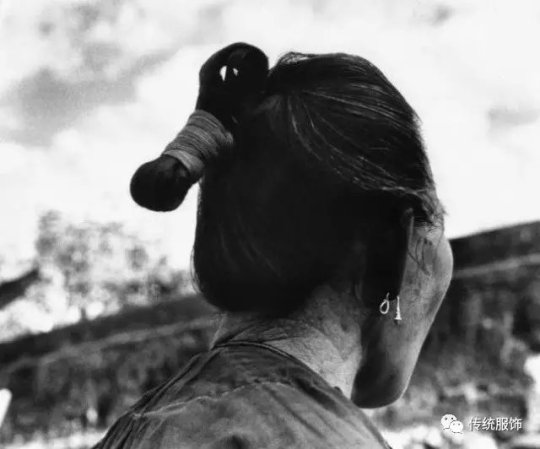

Lastly,Twho are familiar with Japanese culture may notice that above hairstyles are look similar to some hairstyles in Japan call 島田髷.But the method of divide the hair into sections, the way that make the sideburns and the shape after tied the hair together make it to a difference effect from china.
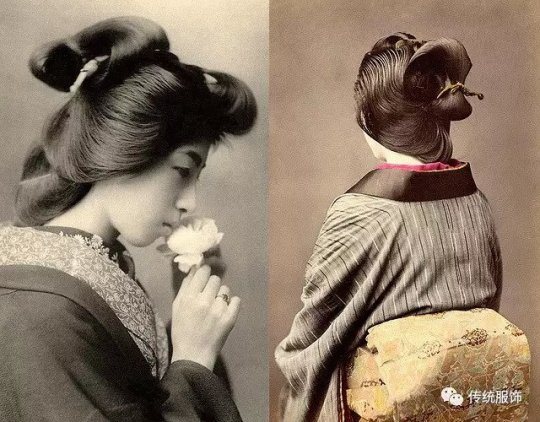
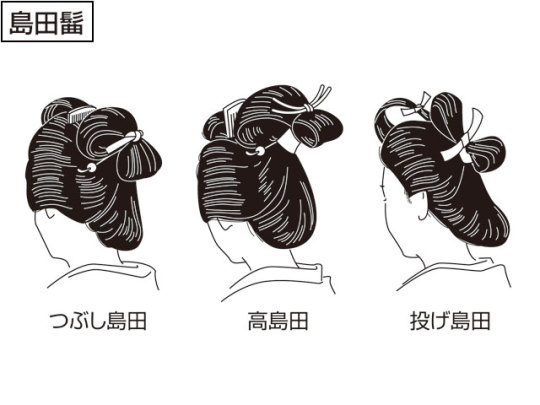
According 日本大百科全書(ニッポニカ),Japan's 島田髷 hairstyle is beginning from the 16th century of Edo period, while the China is also on late Ming period(※usually refers to from the beginning of Wanli (1573) to the end of Chongzhen (1644)).
Not sure if there is a connection between the japan and china. I will update if there is more information.
(Please correct me if I'm wrong🙏)
#Chinese Hanfu#Ming Dynasty#Wanli period (1573–1620 AD)#hanfu#Ming Wanli period woodblock print painting#hanfu history#chinese historical fashion#chinese historical hairstyle#chinese history#chinese traditional clothing#鬃髻(Zōng jì)#两把头 (Liǎng bǎtóu)#三把头 (Sān bǎtóu)#China#Japan#島田髷#Hakka(客家)#Qing Dynasty#recreation#chinese art#-盥薇-#YUNJIN云今#Peony Head (牡丹头)
221 notes
·
View notes
Text
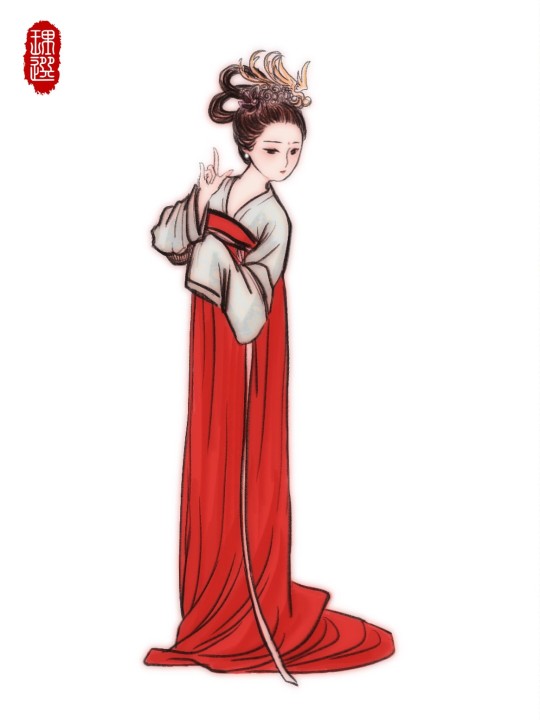
#hanfu#chinese hanfu#hanfugirl#hanfu movement#my original characters#traditional costume#digital painting#art
137 notes
·
View notes
Photo
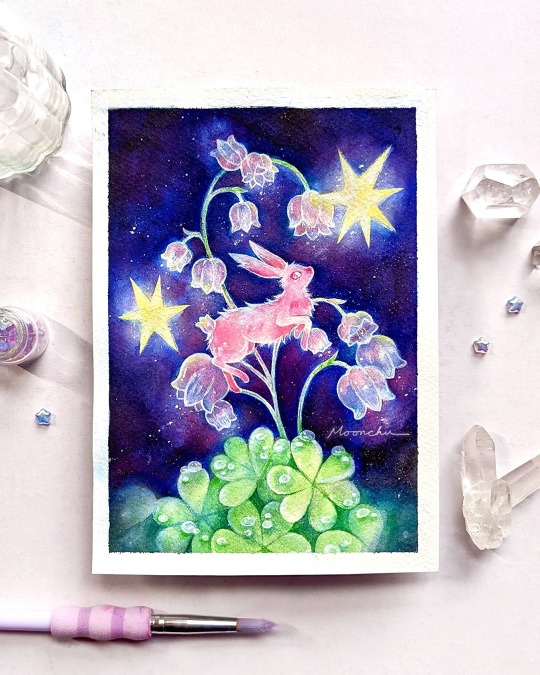
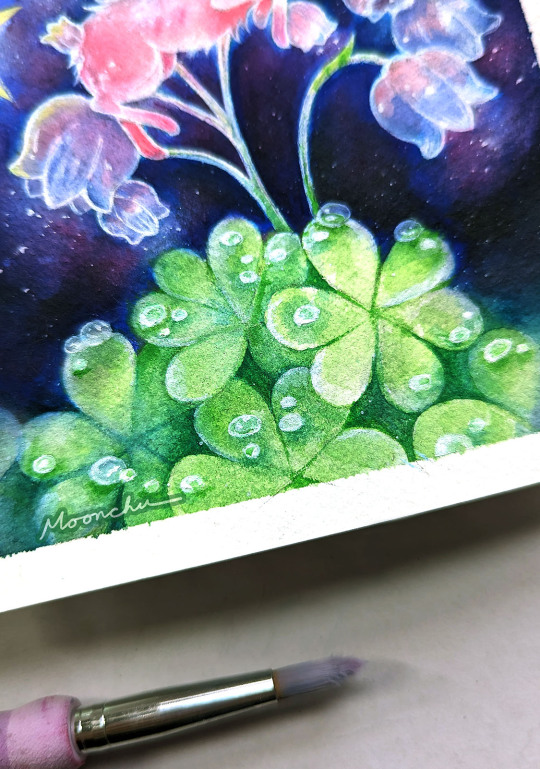
happy lunar new year's eve 🌌
this rabbit brings bell flowers that spark light within the dark spaces ✨
i just kept hearing sparkles as i painted this piece.
mixed media ~ 💜
prints available here.
insta / shop / twitter
#hope you all have a restful new year#rabbit art#rabbit painting#cute bunny artwork#mixed media art#mixed media painting#watercolour artist#watercolor painting#traditional art#botanical artist#botanical art#nature inspired art#inspired by nature#clover painting#acrylic painting#lunar new year#moonchu#lunar new year 2023#lny#chinese new year#year of the rabbit#good luck#four leaf clovers#lily of the valley#artists on tumblr#asian artist#illustrators on tumblr
211 notes
·
View notes